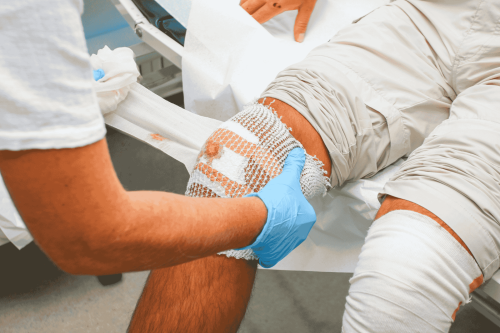Workplace violence is any act in the workplace that involves physical violence, harassment, intimidation, or other disruptive behavior. This can affect employees, clients, customers, and visitors and has a major effect nationwide. The third leading cause of fatal occupational injuries in the United States is due to violence and other injuries.
Risks of Workplace Violence
The workplace contributes to the risk of violence, making employees at risk for experiencing violence. Research has shown that there are many different factors that increase the risk of violence in the workplace. These include, but are not limited to, exchanging money with the public, working alone or in a vacant area, and the time of day and location of work. While many victims have reported workplace violence, there still continues to be several cases that go unreported.
Actions to Reduce Workplace Violence
Violence has a large impact on the workplace. Because of this, it is important to be able to identify risk factors and have employees take corresponding precautions. One step towards reducing workplace violence is establishing a zero tolerance policy toward workplace violence. This policy should cover anyone who is in contact with people who work for their company. In addition, implementing a well-written prevention program contributes greatly to reduce violence.
Violence Protection Program
This program should include the following components in order to best prevent violence. The first is management commitment and employee participation. It is important that all employees recognize that workplace violence is a significant safety and health hazard.
In addition, assign all managers and supervisors responsibilities in order to ensure they understand their obligations. Worksite analysis is also critical. Analysis includes determining existing or potential hazards and understanding why they may lead to violence.
After the analysis, hazard prevention and control should take place. Determine the options that will best reduce the hazards and implement them. Ensure correct use and evaluate for effectiveness. Safety and health training includes educating employees so that they are aware of hazards and are prepared to protect themselves. Lastly, recordkeeping and program evaluation allows the ability to determine effectiveness and make changes if necessary.
Develop an Emergency Action Plan
During emergencies, there is often no warning. Because of this, it is important to develop a plan ahead of time. Plan for the worst case scenario and determine whether an evacuation or shelter in-place should occur.
For emergencies, there is an appointed clear chain of command. This person is the lead and coordinates the plan for evacuation and makes important decisions during the emergencies. In the case of an evacuation, there are different factors that will affect the plan, such as earthquakes, explosions, or the release of chemicals.
A common evacuation emergency is an active shooter. This situation evolves quickly so it is important to evacuate the premise by following an escape plan. Routes and exits are helpful in situations like this. Floor diagrams include arrows that provide direction in the case of an emergency. Routes clearly mark the path and need to be wide and unobstructed.
Get Certified
Understanding workplace violence risk factors and how to minimize these risks is critical for workers to keep themselves and those in the work area safe. American Medical Compliance (AMC) is a leader in the industry for compliance, Billing and HR solutions. To become certified, please visit us at: www.americanmedicalcompliance.com.
Reference
Workplace Violence. Occupational Safety and Health Administration. (n.d.). https://www.osha.gov/workplace-violence.
Emergency Preparedness and Response: Getting Started. Occupational Safety and Health Administration. (n.d.). from https://www.osha.gov/emergency-preparedness/getting-started#evacuation.



